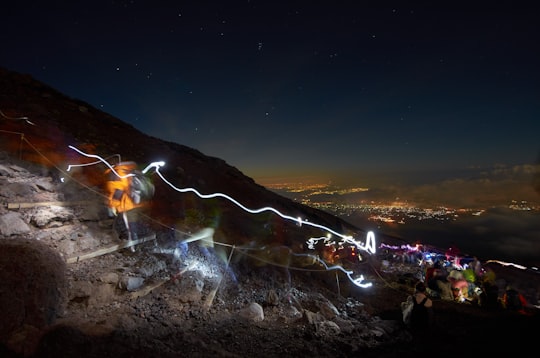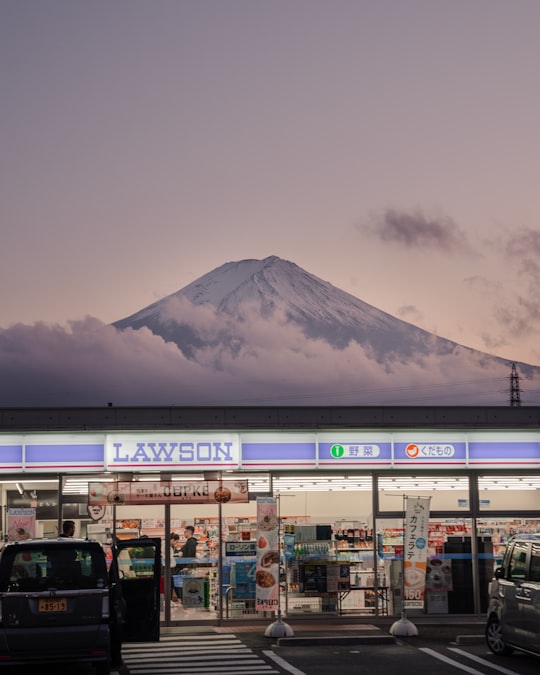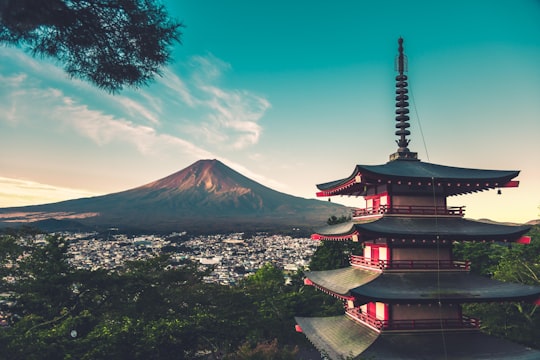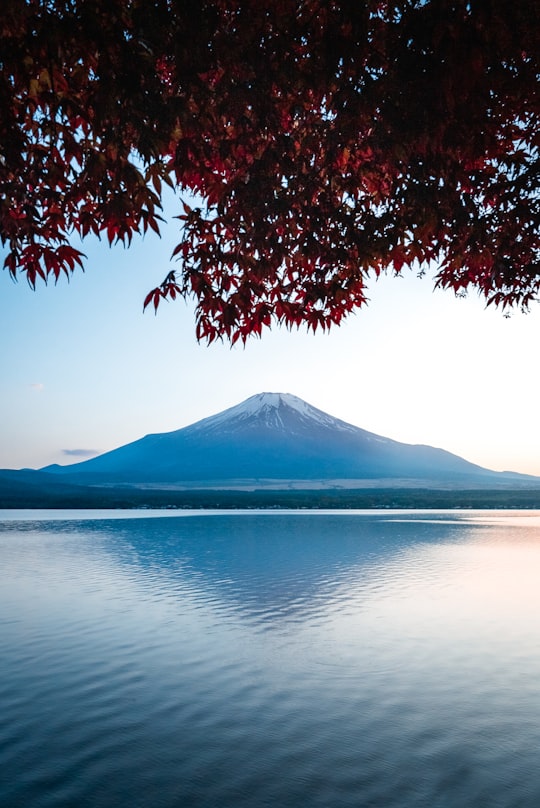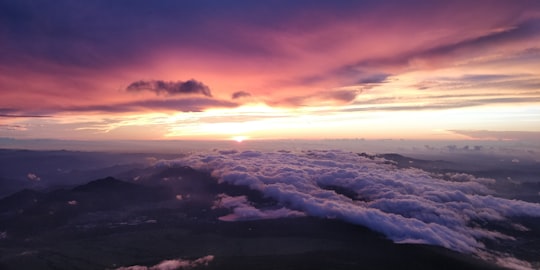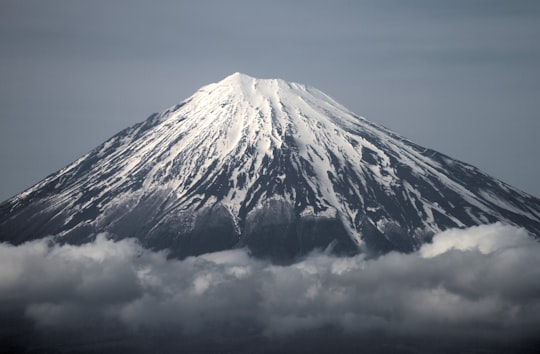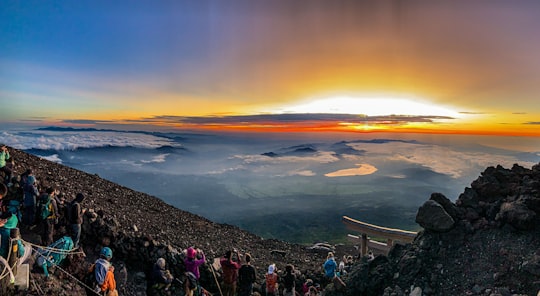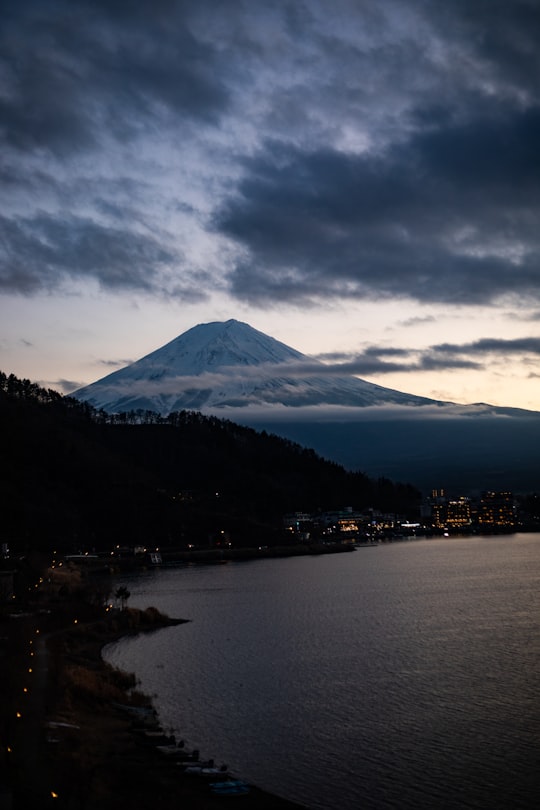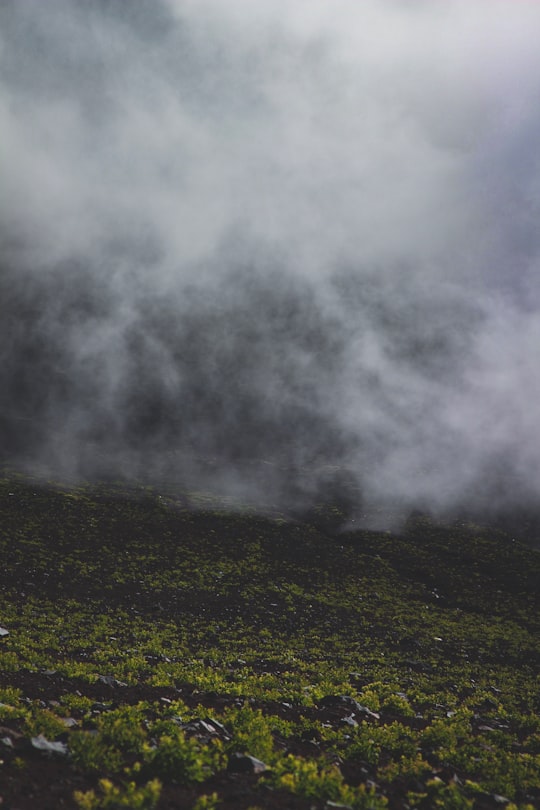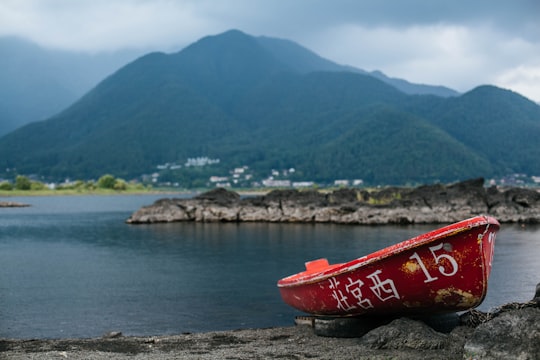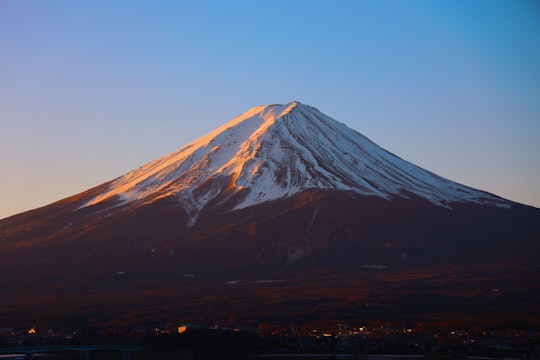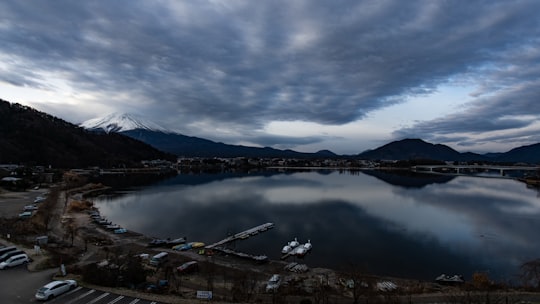Travel Guide of Mount Fuji in Japan by Influencers and Travelers
Mount Fuji, located on the island of Honshū, is the highest mountain in Japan, standing 3,776.24 metres. It is also the second-highest volcano located on an island in Asia, and seventh-highest peak of an island on Earth.
Pictures and Stories of Mount Fuji from Influencers
20 pictures of Mount Fuji from Clay Banks, Yash Raut, Eea Ikeda and other travelers

- Mount Fuji - My favorite shot ...click to read more
- Experienced by @Clay Banks | ©Unsplash
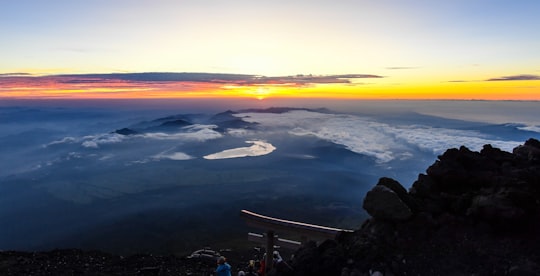
- Marvellous beginning of the day on the Fuji mountain . ...click to read more
- Experienced by @Clement Souchet | ©Unsplash
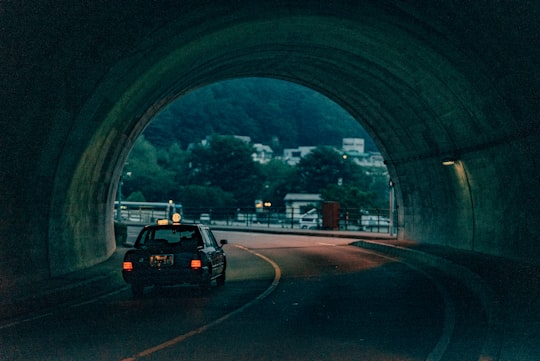
- A Japanese taxi driving in a tunnel. ...click to read more
- Experienced by @Daniel Bernard | ©Unsplash
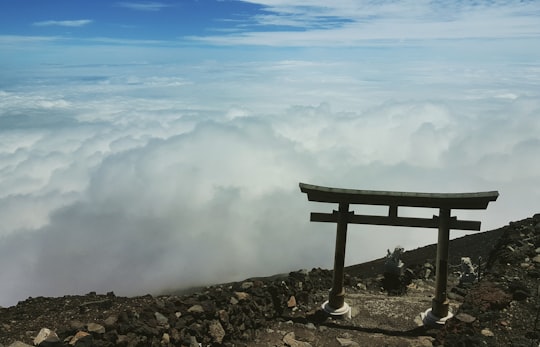
- Amazing view over the clouds on top of Mount Fuji in Japan 🇯🇵 ...click to read more
- Experienced by @Steven Lasry | ©Unsplash
Plan your trip in Mount Fuji with AI 🤖 🗺
Roadtrips.ai is a AI powered trip planner that you can use to generate a customized trip itinerary for any destination in Japan in just one clickJust write your activities preferences, budget and number of days travelling and our artificial intelligence will do the rest for you
👉 Use the AI Trip Planner
How to visit Mount Fuji ?
To reach Mount Fuji, you can take the Shinkansen (bullet train) from Tokyo to Shin-Fuji Station or take the bus from Tokyo's Shinjuku Expressway Bus Terminal to Kawaguchiko Station. From there, you can access the Fuji Five Lakes region at the base of the mountain.
When planning your trip, it's essential to book your climbing permit in advance, especially during the peak climbing season (July and August). The permit is required to climb above the fifth station of the mountain. If you're visiting the area for sightseeing, no permits are needed.
The overall cost of your trip will depend on your transportation choice, accommodations, and activities. Expect to spend around 5,000 to 10,000 yen per person for a round-trip bus ticket from Tokyo, 3,000 to 6,000 yen for a climbing permit, and additional costs for meals and accommodations.
The best things to do at Mount Fuji include:
1. Climbing the mountain during the official climbing season. The ascent usually takes 5-7 hours, while the descent takes 3-5 hours.
2. Enjoying the stunning views of the mountain from the Fuji Five Lakes region, particularly Lake Kawaguchiko, which offers the best vantage points.
3. Exploring the Fujisan Hongu Sengen Taisha Shrine at the base of the mountain, a UNESCO World Heritage Site.
4. Visiting the Oshino Hakkai, a set of eight picturesque ponds fed by the snowmelt from Mount Fuji.
For dining options, consider trying Houtou Fudou near Lake Kawaguchiko, known for its delicious houtou noodles served in a rich miso-based soup. Alternatively, visit the popular Pizzeria Onda, which offers a unique Japanese twist on Italian pizza.
When choosing where to stay, consider the following options:
1. K's House Fuji View, a budget-friendly hostel located near Lake Kawaguchiko, offering both private and dormitory-style rooms.
2. Fujikawaguchiko Onsen Rakuyu, a traditional Japanese ryokan with its own onsen (hot spring) and stunning views of Mount Fuji.
3. Hotel Mystays Fuji Onsen Resort, a modern hotel with comfortable rooms, an onsen, and great views of the mountain.
Off the beaten path:
For an unusual and memorable experience, visit the Aokigahara Forest at the base of Mount Fuji. This dense, moss-covered forest is known for its unique flora and fauna, as well as its eerie atmosphere. While exploring the forest, be sure to stay on marked trails, as it's easy to get lost. Guided tours are available, providing a fascinating insight into the history and legends surrounding this mysterious place.
Book your Travel Experience at Mount Fuji
Discover the best tours and activities around Mount Fuji, Japan and book your travel experience today with our booking partners
Map of Mount Fuji
View Mount Fuji on a map
More Travel spots to explore around Mount Fuji
Click on the pictures to learn more about the places and to get directions
Discover more travel spots to explore around Mount Fuji
⛰️ Hill station spots 🌲 Forest spots 🌋 Stratovolcano spots ⛰️ Mountain range spots ⛰️ Hill spots 🏞️ Loch spots ⛰️ Mountain spots 🏞️ Reservoir spots Panorama spots 🌲 Ecoregion spots 🏖️ Beach spots 🌊 Ocean spots 🌲 Old-growth forest spots 🏰 Pagoda spots 🚢 Pier spots ⛰️ Highland spots 🏞️ River spots 🏞️ Lake spots ❄️ Fjord spots 🛣️ Road trip spotsLearn More about Mount Fuji
Mount Fuji, in Japan, is one of the most emblematic places of the country
And, above all, it is the sacred mountain of the country.
The visit to Fuji-Hanoke-Izu Natural Park is made from the city of Hannoke, which will transport you to a world of beautiful wilderness.
The city, located only 100 kilometers from Tokyo, contrasts with this great teat by its tranquility.
There are many options to visit Mount Fuji. And, without a doubt, you will enjoy the different perspectives of this volcano which, although active, its last eruption took place at the end of the 18th century. In addition to its appeal due to its religious significance, it is the highest mountain in Japan and has a unique aesthetic: a perfect cone, which combines the dark tones of the volcanic stone with the vegetation and white snow that crowns its summit.
Mount Fuji is considered sacred to many religions. For Shintoism, an emperor ordered to destroy the top of the mountain to exile himself from the immortality that possessed him and the smoke that sometimes escapes from the crater of the volcano symbolizes this area of the mountain that is consumed. For its part, Buddhism venerates it for its form reminiscent of the lotus flower. For this reason, there are many shrines and temples on the road that leads to the foot of Mount Fuji in Japan.
More pagan is its consideration as a World Heritage Site, a title it received in 2013 after repeated requests from the Japanese government.
On the way from Hakone to Mount Fuji, several viewpoints offer spectacular views of Japan's sacred mountain. But, a different and original way to enjoy the beauty of the place is to take a cruise on Ashikono Lake. Or you can take the cable car to the top of Mount Komagate and if the weather is good and the clouds have not settled along the fence, look at Mount Fuji in front.
Take advantage of the visit to Mount Fuji to also discover the secrets that Hakone hides. One of the main attractions of the city is its hot springs. The city has many districts, but the most striking is Owakudani, which is located around the crater formed after the last eruption of Mount Hakone more than 3,000 years ago.
In this area, although there is no more volcanic activity, sulfurous pools dot the landscape, where hot springs and rivers are also mixed. All this creates a bucolic setting in which the vapors -without any health risk- create a unique, magical, and relaxing environment.
There are other attractions you must see in Hakone. The botanical garden is one of them, with over 1,700 species. And, of course, don't miss the opportunity to visit Hakone Shrine, a temple which, according to legend, was created by a hermit on Mangan Mountain to unite three smaller shrines: one on top of Kame Mountain, another on top of Komagate Mountain and another known as Han'nyanji to worship the kami (god) of the mountain.
Experience the experience of climbing a staircase bordered by traditional lanterns and a forest of cedars. Inside, you can see various typical buildings. And, of course, admire its torii -traditional Japanese arches-, two on the mountain and one in Ashi Lake, which has become the most sought-after image of Hakone City.
Frequently Asked Questions by Travelers planning a trip to Mount Fuji
The arrival point that we recommend is: Kawaguchiko Station
or Shimoyoshida Station if you want to visit Chureito pagoda first like us.
Some people prefer to go to Yoshidaguchi 5th Station (also known as Kawaguchiko 5th Station), which is the base of the hike to the top of Mount Fuji. There is a bus that goes there from Kawaguchiko Station, there is even a bus that goes there directly from Tokyo. But I don't recommend you to go there, because those who went there were strongly disappointed: Mount Fuji is more beautiful seen from below than seen from above
No need to print the tickets. You can choose to go to Kawaguchiko Station or Kawaguchiko 5th Station (the 5th station only for summer). It costs between 1750yen and 1800yen/adult/one way.
Where to Stay near Mount Fuji
Discover the best hotels around Mount Fuji, Japan and book your stay today with our booking partner booking.com


